Japan’s largest and northernmost prefecture, Hokkaido (北海道, ほっかいどう) is a destination that shouldn’t be overlooked when traveling in the country. There’s a reason to visit in every season as its landscape changes from snowy cities and mountains in winter, to rainbow fields of flowers in spring and summer, and fiery red leaves in autumn.
This cooler climate and rich landscape have also created an ideal environment for farming and fishing, resulting in food that has made Hokkaido a top destination in Japan for foodies. Food from Hokkaido is so popular that there are frequent marketplaces and fairs at department stores across Japan throughout the year that feature Hokkaido food products.
In this article, I’ll share popular mouthwatering, must-eat local dishes in Hokkaido cuisine (Hokkaidō ryōri, 北海道料理), including meals that will warm you up on a cold winter day and refreshing treats in summer.
Table of Contents
Miso Butter Ramen
When visiting Hokkaido, trying miso butter ramen (味噌バターラーメン) is a must.
Ramen in general is famous in Hokkaido — in fact, miso ramen originated in the prefectural capital Sapporo. But if you want a leveled-up version of miso ramen, you need to have miso butter ramen.
As the name suggests, miso butter ramen contains a miso and chicken or pork-based broth. It is also topped with a knob of butter as well as fresh, Hokkaido-grown corn. A bowl of this ramen is as rich in flavor as it sounds and is downright delicious.

Soup Curry
Soup curry (スープカレー) is what I consider the ultimate comfort dish, especially on a cold day.
Roasted bone-in chicken leg and flash-fried vegetables are nestled within a spice-filled soup that makes everything amazingly tender and juicy. The blend of spices usually isn’t too hot and is instead filled with a myriad of flavors that will make you want to drink the entire bowl.
Soup curry can be found at restaurants throughout the country but I haven’t enjoyed a bowl quite like the ones I’ve had in Hokkaido.
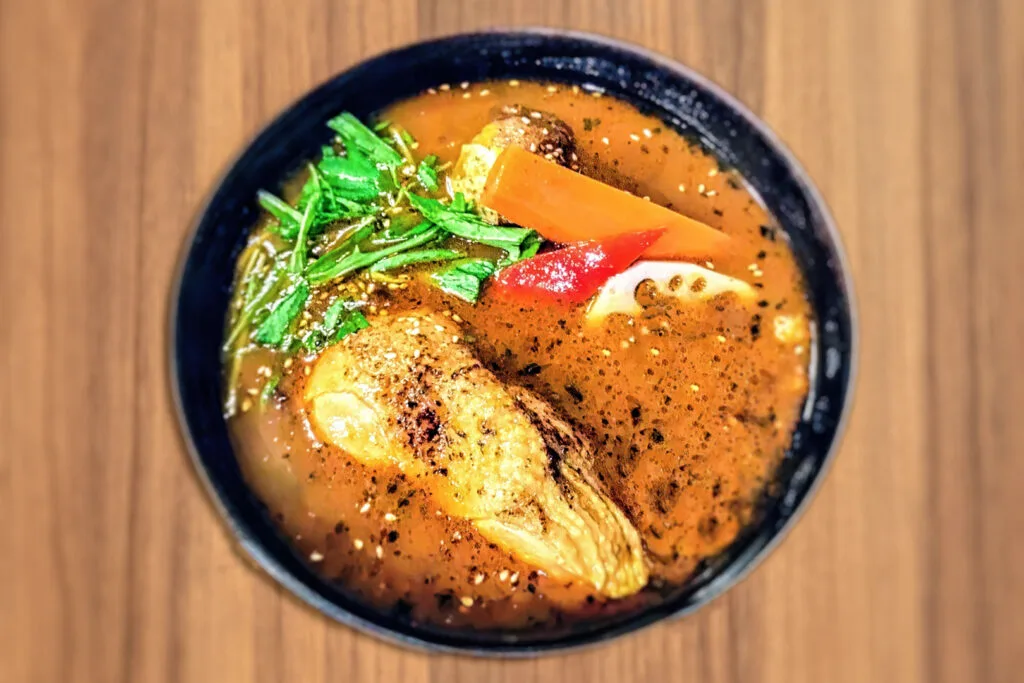
Genghis Khan
No trip to Hokkaido is complete without trying Genghis Khan (ジンギスカン), a famous local way of preparing grilled mutton or lamb.
The meat is marinated in a savory sauce, which makes it tender and flavorful, before being grilled. The dome shape of the grill is also unique as it allows the juices from the meat grilling on top to drip onto the vegetables on the bottom.
There are plenty of places to try Genghis Khan in Hokkaido, such as Jingisukan Daruma for the taste and Sapporo Beer Garden for the atmosphere.
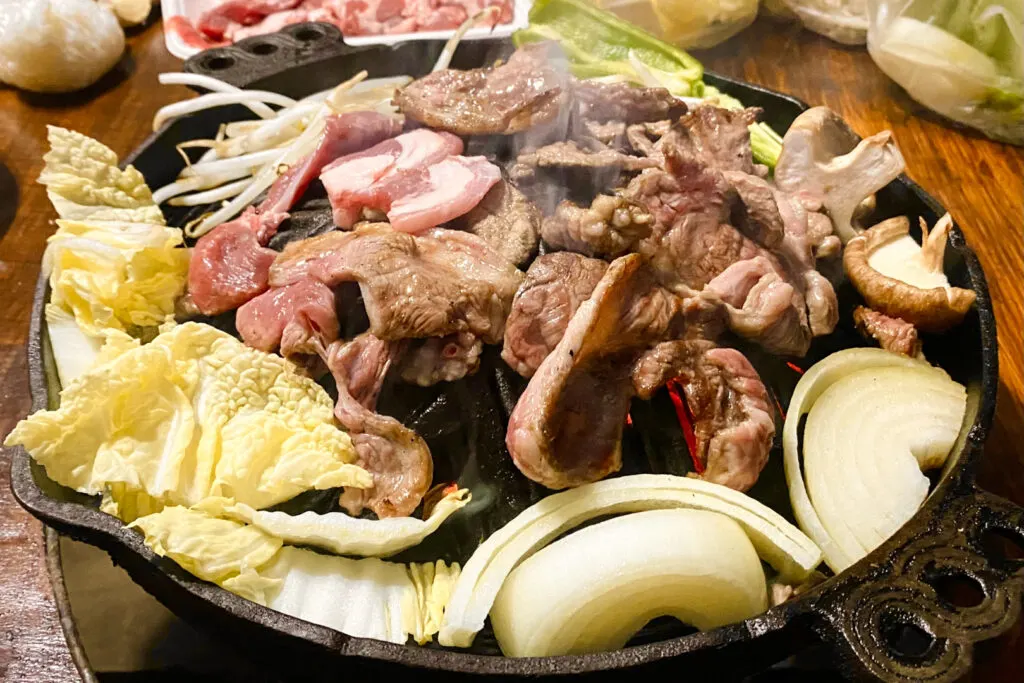
Crab
The colder ocean water surrounding Hokkaido lends itself to some of the most fresh and delicious seafood you’ll have in Japan, and crab (カニ, kani) is especially popular in Hokkaido.
There are many varieties of crab in Hokkaido, such as red king crabs (タラバガニ, tarabagani) and snow crabs (ズワイガニ, zuwaigani), although what you might encounter at restaurants in the prefecture may depend on the season when it’s most fresh and delicious. The best time to try Hokkaido crabs is during winter and spring as that’s when most varieties are in season.
Crab in Hokkaido is served in numerous ways, such as in shabu shabu, grilled, boiled, in miso soup or nabe (hot pot), or as sashimi, although this depends on the type of crab since some varieties are more suited for a particular dish than others.

Ishikari Nabe
Ishikari Nabe (石狩鍋) is a miso-based hot pot (nabe) dish featuring a variety of seafood, such as salmon and clams, and vegetables cooked in a stone pot with broth.
Its name comes from the town it originated in, Ishikari, back in the Edo period (1603-1868). Fishermen used to celebrate catching a large haul of fish by making this hot pot, and it caught on with tourists before becoming popular across Hokkaido.

Chanchan Yaki
Another dish that originated in Ishikari, this beloved and simple meal in Hokkaido features salmon grilled in a cast iron pan with butter, vegetables such as cabbage and carrots, and a marinade of miso, sake, mirin, and sugar.
Since it’s so easy to make, chanchan yaki (ちゃんちゃん焼き) is a common go-to in Hokkaido when it comes to home-cooked meals, but you can find it in restaurants in the prefecture, too.

Zangi
You might be aware of karaage (唐揚げ), which is a popular fried chicken dish in Japan, but did you know that Hokkaido has its own version?
The chicken in zangi (ザンギ) is incredibly flavorful due to being thoroughly seasoned with a mixture of soy sauce, sake, garlic, and ginger, making it like an upgraded version of karaage.
Another difference between zangi and karaage is that zangi comes in two types – boneless and bone-in, whereas karaage is served boneless. You can also enjoy octopus zangi, as well as squid.
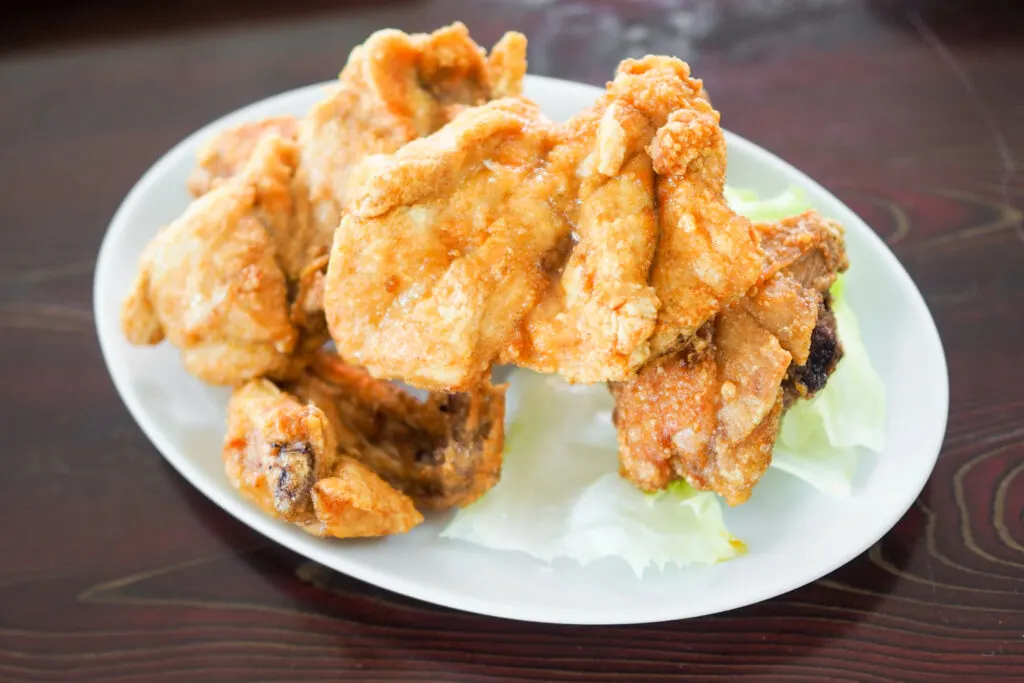
Buta Don
Buta don (豚丼) is a bowl of rice topped with fried or charcoal-grilled slices of pork coated in a soy sauce-based marinade. This dish is ubiquitous across Japan; however, it is believed to have originated in Obihiro city in Hokkaido during the early Showa period (1926-1989).
During that time, eel (unagi) was expensive so locals decided to make use of the flourishing pork industry to create a more budget-friendly alternative to unagi don (鰻丼), which is why the sauces for both dishes are quite similar.

Ikura Don
Ikura is cured salmon roe and in Hokkaido, you can get bowls of rice generously topped with these plump, shiny orange eggs, called ikura don (いくら丼).
The salty flavor of the salmon roe, removed from its membrane casing and cured with a salt or soy sauce brine, nicely balances with the white rice.
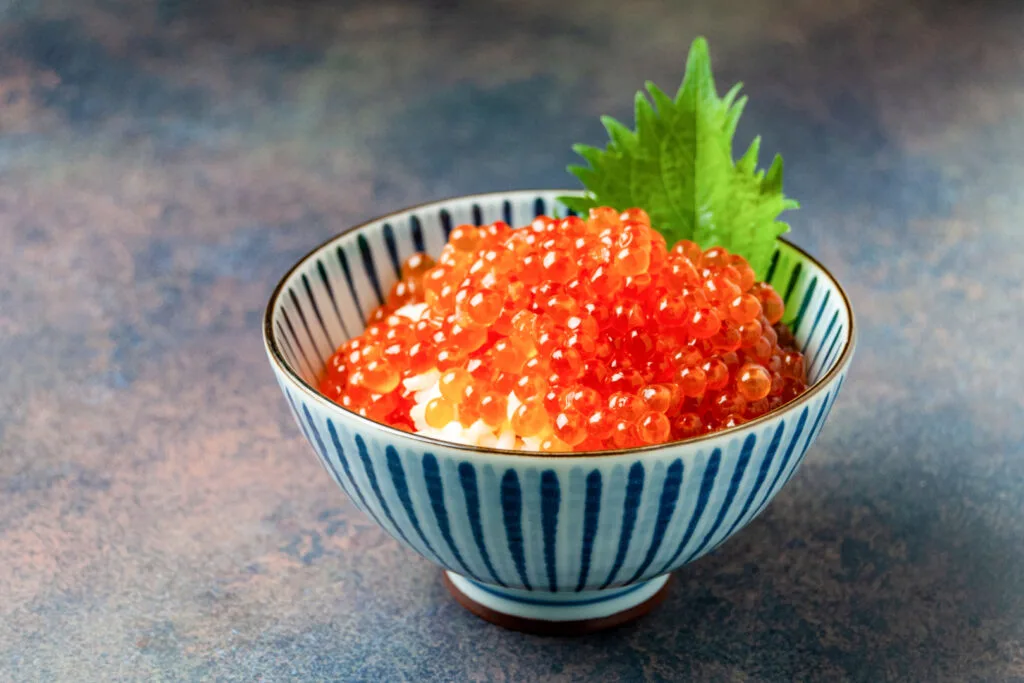
Uni Don
Similar to ikura don, uni don (ウニ丼) is a rice bowl that is topped with sea urchin (uni), which is another type of locally caught seafood in Japan.
The Shakotan Peninsula located in western Hokkaido is especially famous for its sea urchin, which has a creamy, buttery texture and taste thanks to the kelp it feeds on.
Uni is in season during the summer so it’s best to try it then if you want to enjoy it when it’s most fresh.
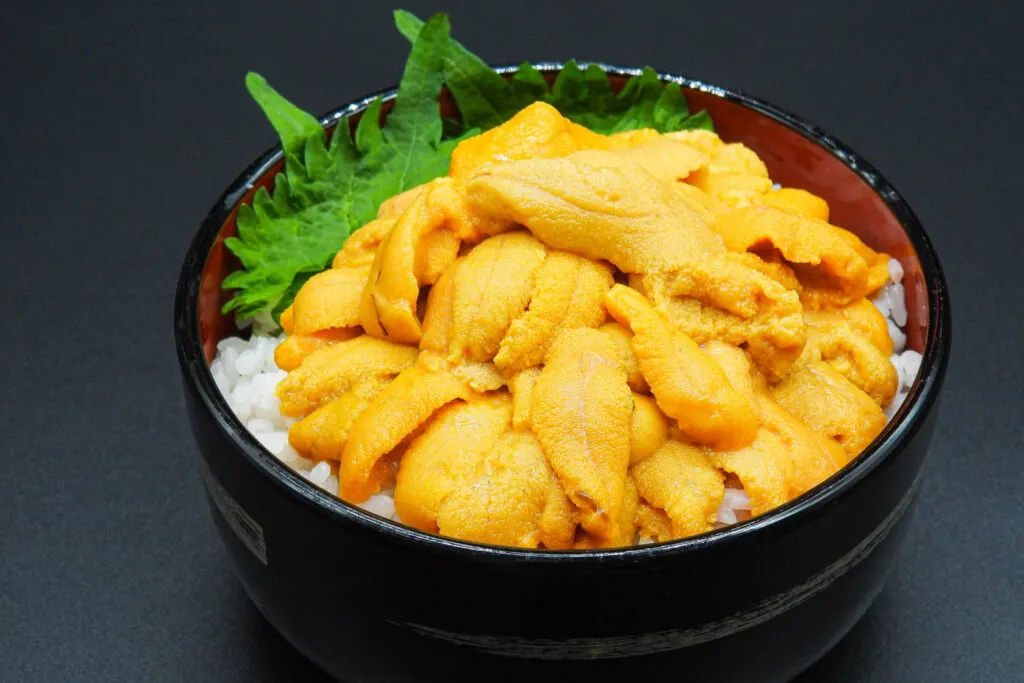
Imo Mochi
As the leading producer of potatoes in Japan, Hokkaido undoubtedly loves incorporating this starchy vegetable into their cuisine. It’s not surprising then that during the Meiji period (1868-1912), they created a type of mochi that features potatoes (imo) instead of rice.
Imo mochi (いももち, potato mochi) are almost like fried mashed potato cakes but also contain a little bit of soy sauce and some perilla leaves (shiso), giving it a nice umami flavor.

Cheese
Hokkaido is known for its dairy and throughout the country you’ll see that there’s lots of milk and butter from Hokkaido for sale in grocery stores. Cheese (チーズ) is also no exception! There is so much variety when it comes to cheese from Hokkaido, including some containing interesting ingredients like squid ink powder.
In Hokkaido, I recommend going to Furano Cheese Factory, where you can see cheese being made, sample different kinds of cheese, buy some fresh cheese, or have a cheesy pizza at their restaurant. You can also enjoy cheese fondue with locally made wine at Furano Wine House.

Lavender Ice Cream
If you visit Hokkaido during summer, Furano (富良野) is a must-see destination. It’s absolutely beautiful, and one of Furano’s claims to fame is the rows of lavender growing in its colorful fields. Best of all, after you’ve snapped some pictures, you can try lavender-flavored desserts like ice cream.
Made with Hokkaido milk, lavender ice cream (ラベンダーアイスクリーム) is creamy with just the right amount of sweetness so it’s not overpowering. Check out Farm Tomita to get a taste of this ice cream and other desserts made of lavender, as well as Furano melon.

Melon
Furano melon (富良野メロン) and Yubari melon (夕張メロン, Yūbari meron), which are both named after the cities in which they’re grown in Hokkaido, are famous for their juicy and sweet taste.
Furano melon comes in many varieties with both green and orange flesh, whereas Yubari melon only has one variety with orange flesh. Furano melon is also sweeter than Yubari — however, Yubari melon is considered more luxurious due to its more balanced taste, as well as smoother and softer flesh with a melt-in-your-mouth texture. This is why Yubari melons can cost as much as 20,000 yen per melon (around US$130) and are less likely to be sold in grocery stores.
Both of these melons can be enjoyed in various ways, such as in jellies, puddings, melon bread, topped with ice cream, as a juice, and of course on its own as well.
The best time to enjoy melons in Hokkaido is during summer when they’re in season.

Kay is a Canadian freelance translator and writer who has been in Japan for more than a decade. Having lived in the Chugoku, Kanto, and now the Kansai regions, she hopes to share their various local cuisine on JFG.
She also writes about her experiences being a mother in Japan on her website, Tiny Tot in Tokyo.
